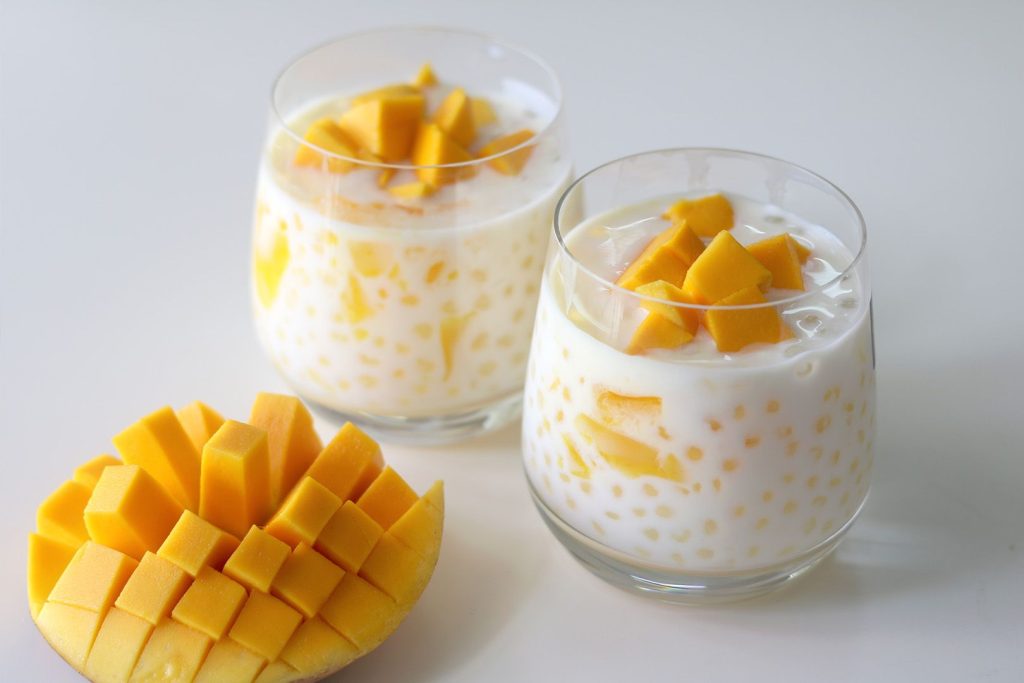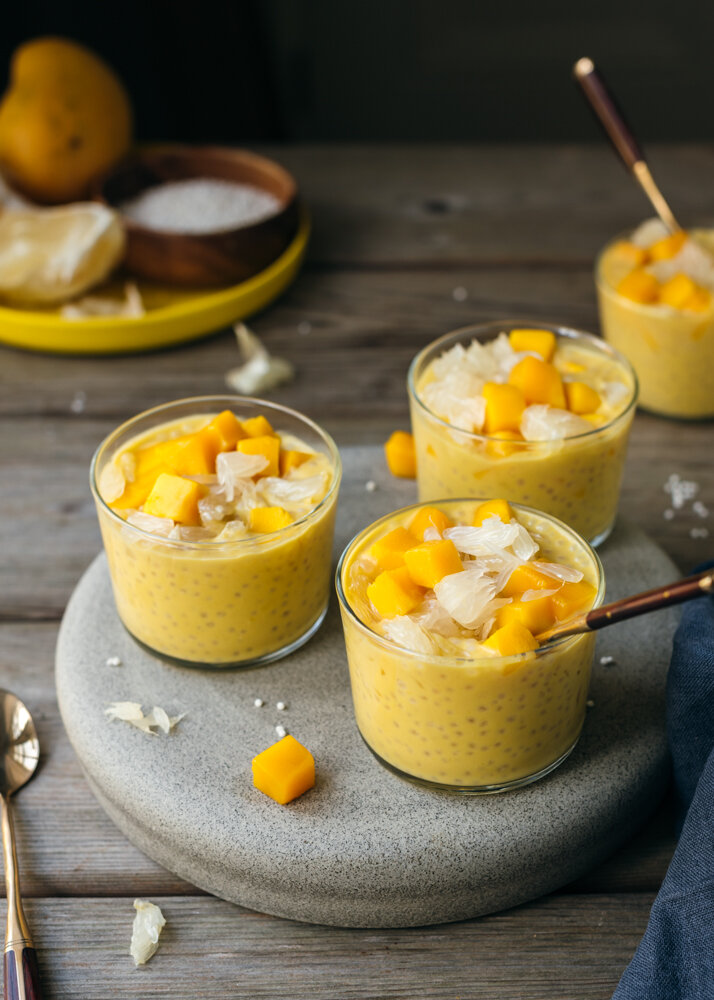Craving Mango Sago
Do you enjoy sweet treats that are both creamy and refreshing? If so, you’ll love indulging in the delightful dessert known as Mango Sago. This popular dish combines the luscious taste of mango with the unique texture of tapioca, creating a dessert that is sure to satisfy your sweet tooth. Imagine a creamy mango dessert with chewy tapioca pearls that burst with flavor in every bite. If you’re craving a tropical and satisfying treat, Mango Sago is the perfect choice for a delectable dessert experience.
Craving Mango Sago

- Mangoes: Choose ripe ones for the best flavor.
- Tapioca Balls: Essential for the sago’s chewy texture.
- Sweetened Condensed Milk: Adds creaminess and sweetness.
- Water: For boiling the tapioca.
- Sugar: Optional (for extra sweetness if needed.)
- Prepare the Mango: Peel and cut mangoes into chunks.
- Blend the Mango: Put mango chunks in a blender and puree until smooth.
- Strain the Puree: Use a strainer to sieve the mango puree into a bowl to ensure it’s smooth.
- Cook Tapioca Balls: Boil water in a pot, add tapioca balls, and cook until they become translucent. Drain well.
- Mix Ingredients: In a large bowl, combine the strained mango puree, cooked tapioca balls, and sweetened condensed milk. Mix well until everything is evenly combined.
- Chill Before Serving: Refrigerate the mixture for at least an hour before serving to enhance the flavors and coolness.
Homemade Mango Sago vs. Restaurant Mango Sago
When it comes to enjoying mango sago, there are two main options: homemade or from a restaurant. Homemade mango sago is made in the comfort of your own kitchen, allowing you to control the ingredients and sweetness level. On the other hand, restaurant mango sago offers convenience and the expertise of professional chefs. The homemade version may be fresher and healthier as you know exactly what goes into it. In contrast, restaurant mango sago may have a more refined taste due to the skills of the chefs. Ultimately, the choice between homemade mango sago and restaurant mango sago boils down to personal preference and convenience.

Key Ingredients for the Perfect Mango Sago
Mango
Mango is the star ingredient in Mango Sago dessert. Opt for ripe mangoes for the best flavor. There are various mango varieties to choose from, each offering a unique taste and sweetness level. Ripe mangoes add a natural sweetness and tropical flair to the dessert, making it a refreshing treat.
Milk Options
When preparing Mango Sago, you have various milk options to choose from. You can use heavy cream for a rich and creamy texture, evaporated milk for a slightly sweeter taste, or coconut milk for a hint of tropical flavor. Each milk option brings its own unique touch to the dessert, so you can select based on your preference or dietary needs.
Pomelo
Adding pomelo to Mango Pomelo Sago enhances the texture and flavor of the dessert. Pomelo, a citrus fruit, adds a refreshing burst to the creamy mango sago. Its unique texture and tangy taste complement the sweetness of the mango, creating a delightful combination in every bite.
Serving Suggestions
Here’s how to beautifully serve your mango sago: Chill: Serve the mango sago chilled for a refreshing taste. Presentation: Spoon the mango sago into attractive glasses or bowls. Garnish: Top with mango chunks or a sprig of mint for a pop of color. These steps and tips ensure your mango sago is not only tasty but also visually appealing. Enjoy making and serving this delightful treat!
FAQ: Frequently Asked Questions
Q: What is mango sago?
A: Mango sago is a creamy mango dessert made with tapioca balls and sweetened condensed milk.
Q: How do I make mango sago at home?
A: You can make mango sago at home by blending ripe mango with sweetened condensed milk, heavy cream, and tapioca balls, then straining the mixture to remove the tapioca balls.
Q: Can I use coconut milk instead of heavy cream?
A: Yes, you can use coconut milk instead of heavy cream to make mango sago.
Q: Is mango sago a healthy dessert option?
A: Mango sago can be a healthy dessert option if you use low-fat milk and sweetened condensed milk in moderation.
Q: Can I add other fruits to mango sago?
A: Yes, you can add other fruits like strawberries or blueberries to mango sago for a unique flavor combination.
